|
|
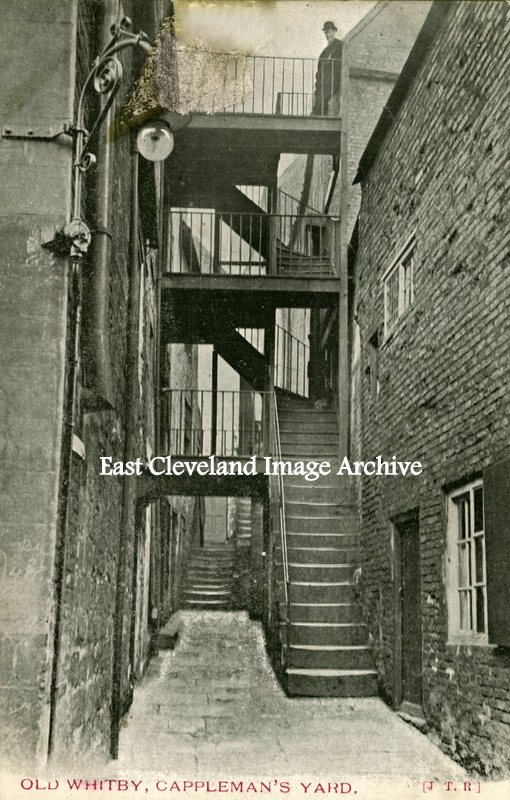
This J. T Ross postcard view of Cappleman’s Yard although not postmarked dates probably from the late 1890’s. Situated at 43/44 Church Street, Cappleman’s Yard is first listed in 1828 and later in 1899, changed its’ name to Stanley Place c.1909. A typical example of a Whitby yard with steps and landings crossing the narrow yards or alleys which adjoined Church Street in particular.
Image courtesy of Iris Place.
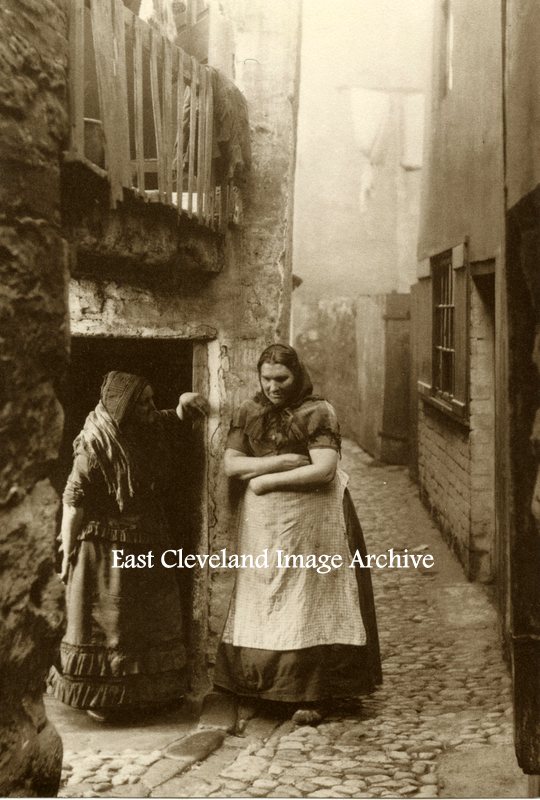
The actual title of this Frank Meadow Sutcliffe postcard (a Jayscale Reproduction) is “Women in New Way Ghaut, Whitby”, but the immediate impression when first viewed is that two ladies are enjoying a ‘quiet discussion’. Perhaps another ladies reputation or style was the topic of conversation?
Image courtesy of Iris Place.
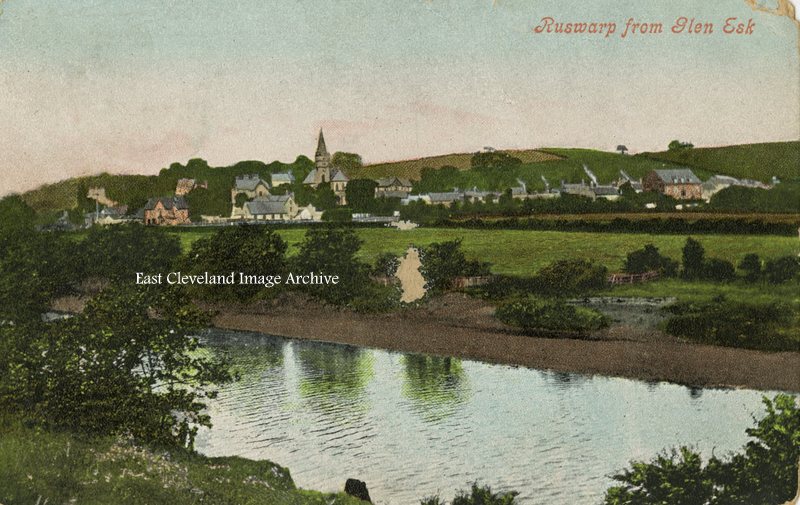
This Valentine’s Series postcard postmarked 1905; views Ruswarp from slightly down river than the normal views that include the road and rail bridges. At the is point the River Esk is of considerable expanse as it wends its’ way to Whitby and the sea.
Image courtesy of Iris Place.
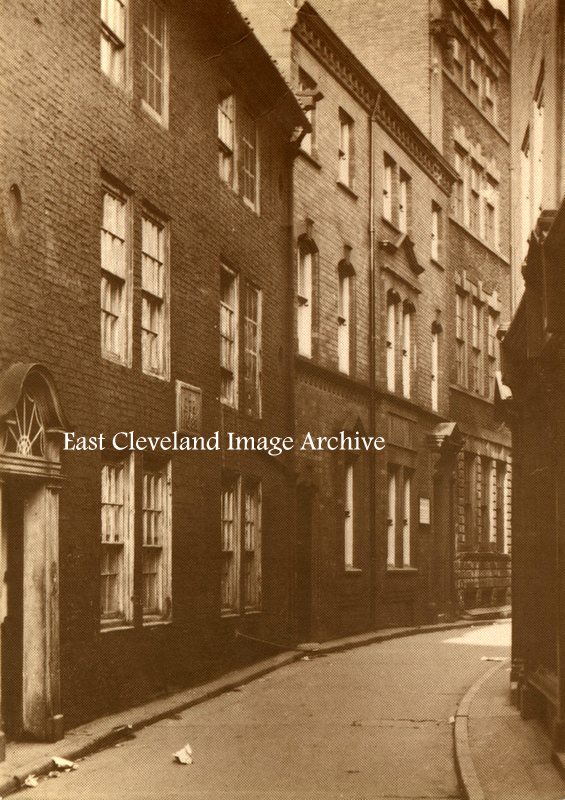
Familiar to many; as according to Whitby tradition, Cook’s master; Captain John Walker, lodged his apprentice at his house in Grape Lane this now being the Captain Cook memorial museum.
Image courtesy of Iris Place.
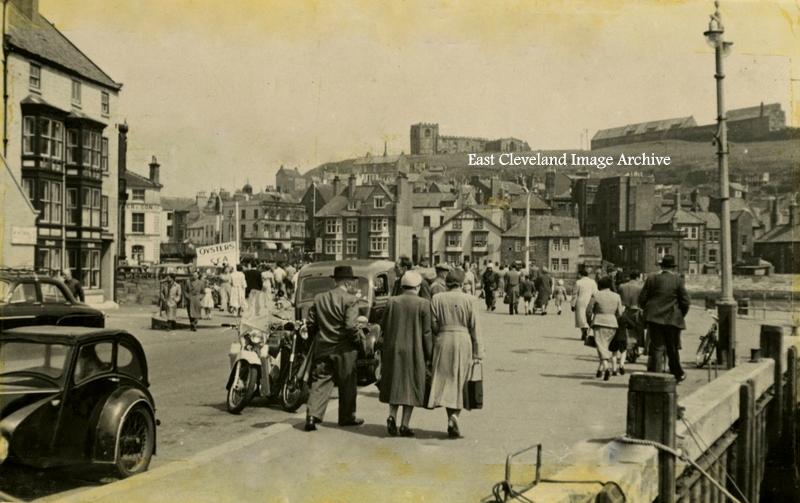
This mid-fifties postcard view of New Quay Road, Whitby; on a cooler summer day (note the long coats) still has the original Boots Corner building on the left hand side of image. Do you remember the vast numbers of motorbikes and sidecars; mine is of very small gentleman with a weightier companion in the sidecar!
Image courtesy of Iris Place.
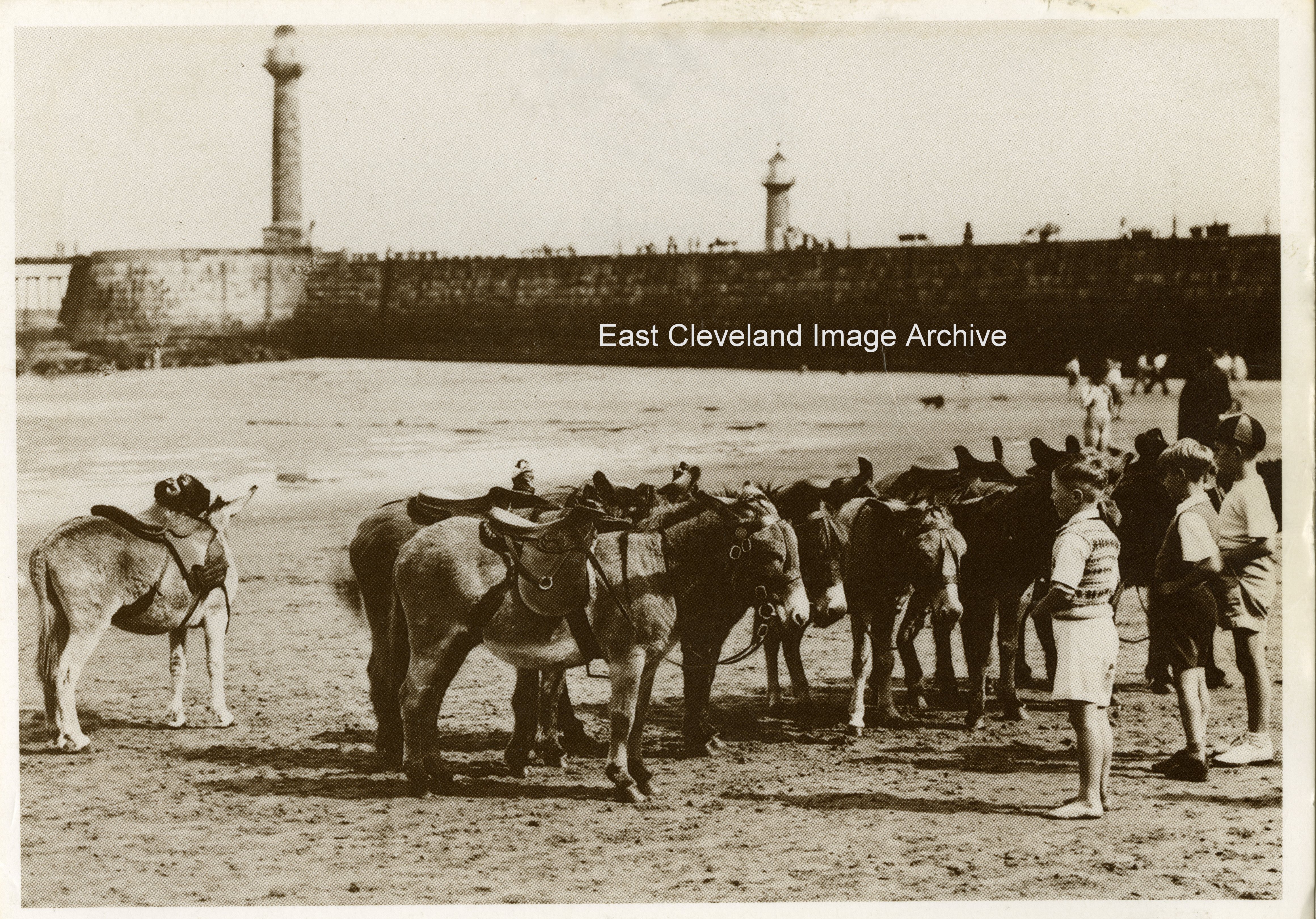
Dating from the 1950s this postcard view shows the Whitby donkeys awaiting their riders under the Battery Parade, although one seems a trifle hesitant about the whole experience! No visit to the beach was complete without the donkey ride, provided you were small enough; even more so today. Even larger children being deemed to be to weighty, if memory serves me correctly even mumor dad sometimes had a ride.
Image courtesy of Iris Place.
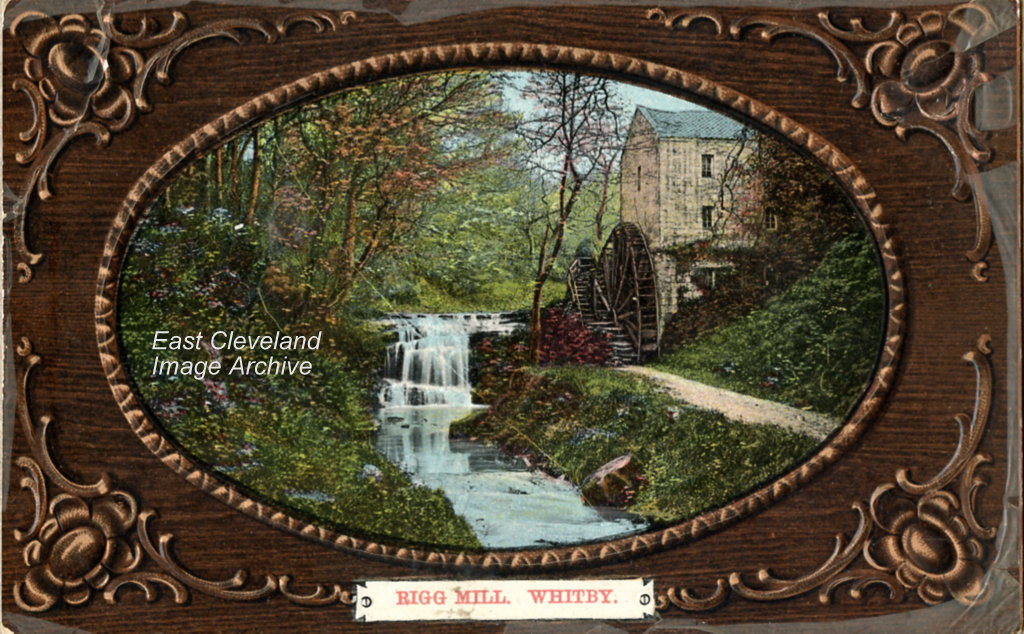
On the site of a Water Mill since the 11th century, The earliest mention in medieval times is an account of a dispute between the Abbot of Whitby owner of the land, and Sir Alexander de Percy tenant in 1316. The mill situated in Larpool woods was rebuilt several times. In 1829 the Miller was William Hill. Can any one tell us when the Mill was last in use.
Image courtesy of Iris Place.
We have had a request for assistance in naming people in the image, Can anybody assist?
Elaine Meadows (nee Tyerman) tells us: “As you look at the picture taken at Runswick Bay in the 1950’s the first 2 children from the left hand side are unknown, (possible from Hinderwell or Runswick Bay); then my cousins Janet and Christine (Chris) Pearson as they were then aged 5 – 6 years. They lived Browns Terrace at Hinderwell, and Chris still lives at Hinderwell. 2 of 4 children of Cyril and Hilda Pearson (nee Tyerman)….their other two siblings are not on picture. We have asked all the family if they know the other 2 girls….and nobody knows them…they are not family members. The picture was sent from Canada saying on the back your Cousins from Hinderwell… as I said the two on the right are…..the other two are definately not Canadians.”
If you can assist please send via the comments facility and we will pass on to Elaine. Many thanks.
A further War Memorial created and erected by William Arrowsmith of Loftus. The Staithes War Memorial stands at the top of the bank that leads down into the lower part of the village, and the harbour. The memorial is inscribed: ”Staithes War Memorial: To Perpetuate the memory of Those Who Made The Supreme Sacrifice for King and Country. During the Great War 1914 – 1918”. As the century progressed this deeply felt sentiment had to further include the soldiers, airmen, and a large number of sailors from the Second World War; to the present day as with all Memorials the more recently fallen are remembered. As Laurence Binyon’s poem states: ”WE WILL REMEMBER THEM!”
Anne Beckett advises: “One of the brave men mentioned on the war memorial is Alexander Macdonald Watson – he was the Chief Officer on the Adellen – the ship was hit by a U-boat in the North Atlantic. He lived at Glendevon Cottage in Barrass Square, Staithes and was married to Lily Watson.”
Image courtesy of Loftus Town Crier, thanks to Anne Beckett for the update.
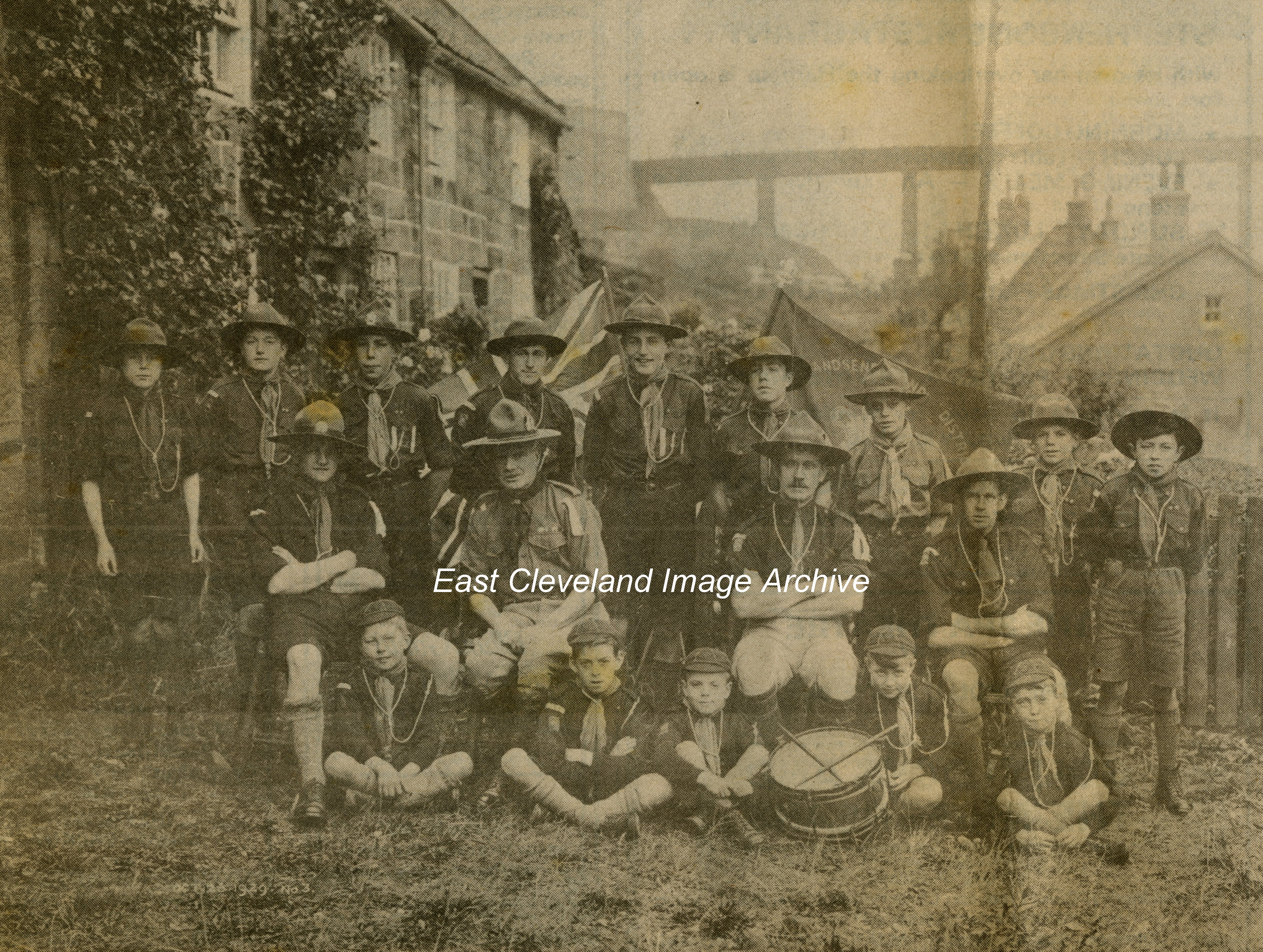
Pictured at Sandsend with the railway viaduct in the background; the Cubs and Scouts of Sandsend had assembled.
Back row (left to right): D. MacLean, R. Sleightholme, John Young, G. Crosby, H. Crosby, H. Foster, W. Mead, T. Waller, W. Stamp, C. Thomas.
Middle row: J. Robson (Cub Master), Dr. Tinley (District Commissioner), T. Walker (Scout Master), W. Braithwaite (Assistant Scout Master).
Front row: F. Stonehouse, S. Sparks, B. Waller, T. Pybus, Reg. Carass .
Image courtesy of John G Hannah (originally from Whitby Gazette “Down Memory Lane” 1980).
Page 2 of 34«12345...102030...»Last »
|
|







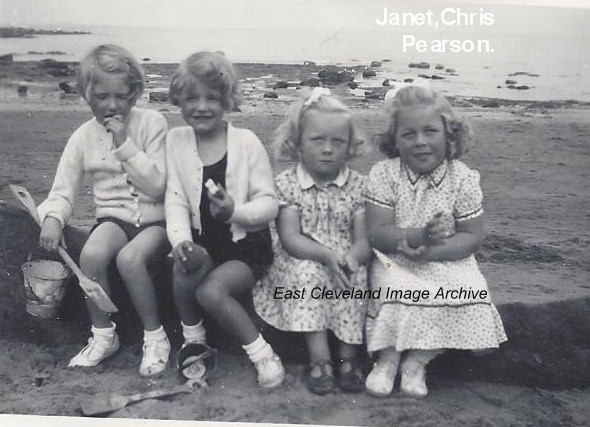
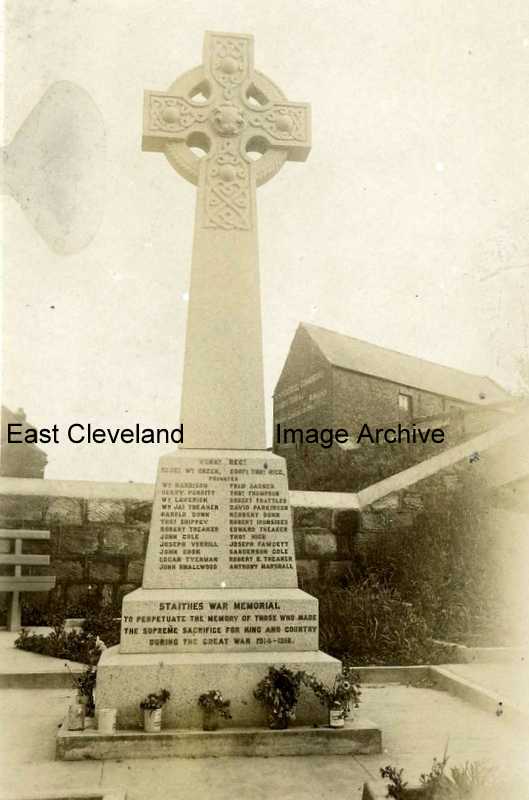

Recent Comments